Sri Lanka’s Economy: Shifting from the debt trap to a deadly snare

By G R M Gamlath
When studying the history of Sri Lanka or reading about its various economic, social, cultural, and political phenomena, it is unquestionably evident that our country possessed a self-sufficient economic system, a rich culture, and a profound human civilization. During that era, the nation was self-reliant in rice production, saw advancements in the agriculture and irrigation sectors, and engaged in exports to other countries. Despite occasional threats, invasions, and conflicts, these challenges were relatively resolved, enabling the people to achieve their aspirations in a stable society nurtured by many rulers of the time. Evidence supporting this can be abundantly found in Sri Lankan historical records, inscriptions, and folklore. At that time, Sri Lanka was naturally endowed with many valuable economic resources (such as gems), and historical and anthropological evidence of these can still be observed today.
This situation changed drastically with the arrival of the Portuguese in 1505, when they colonized Sri Lanka and transformed it into one of their colonial states. Subsequently, the Dutch and the British followed suit, successively establishing their colonial rule over the island. From that point onward, they disrupted the self-sufficient agrarian economy that had prevailed in Sri Lanka, introducing plantation crops such as tea, rubber, and coconut, which became the mainstay of the economy. These plantation crops were exported, and the income generated was used to import goods necessary for the country. Consequently, the people were compelled to rely on these imports for their livelihoods instead of their own efforts.
From this period onward, the previously self-sufficient economic system transitioned into a dependent economic model in Sri Lanka. This event can be regarded as the root cause of the current economic crisis faced by the country. Regardless of the various economic theories and debates that exist, many points and arguments can be presented to link Sri Lanka’s modern economic challenges and the prevailing debt trap to this historical development.
Although the colonizers have fully departed from the country by now, the economic and social destruction they caused to our nation could fill numerous books. As a result of these events, the people of our country became accustomed to relying on imported goods, and local production began to decline rapidly. Even today, the primary source of income for Sri Lanka is the export of apparel. Other significant exports include tea, rubber, coconut, and related products.
Over time, within this fluctuating economy, the gap between income and expenditure, which initially maintained a surplus level, gradually fell into deficit territory. Today, it remains in a negative state. To bridge this gap, borrowing was initiated and continues to this day. The repayment of Sri Lanka's debt is divided into domestic and foreign components. According to the government, borrowing is undertaken to cover the budget deficit, fulfill specific developmental objectives, finance consumer goods, and support state-sector development activities.
According to the statistical data published jointly by the Ministry of Finance and the Central Bank of Sri Lanka through the Treasury website, Sri Lanka's total public debt at the end of 2022 stood at USD 83.6 billion (LKR 27,421 billion). As a percentage of Gross Domestic Product (GDP), this amounts to 128.1%, which is undoubtedly an unfavorable situation for the country. According to the Central Bank of Sri Lanka's report, the public debt in 1950 was LKR 654 million. By 1960, it had increased to LKR 2,282 million, reaching LKR 8,689 million in 1970, LKR 51,346 million in 1980, LKR 310,779 million in 1990, LKR 1,218,700 million in 2000, LKR 4,590,245 million in 2010, and LKR 27,492,031 million in 2022. This indicates a massive increase in public debt from 1950 to 2022. When expressed as a percentage of GDP, public debt was 16.9% in 1950, 34% in 1960, 64% in 1970, 77% in 1980, 97% in 1990, 96.9% in 2000, 72% in 2010, and 113.8% in 2022, showing a clear upward trend over the years.
Further to the records mentioned above, the question we need to examine is what has been accomplished for the country’s development by incurring such a massive debt burden in addition to Sri Lanka’s state revenue. Despite the government obtaining funding from both domestic and foreign debt sources over the years, the economic challenges resulting from the COVID-19 pandemic, the subsequent global economic crisis, and the contraction of Sri Lanka’s production capacity have led the country to default for the first time in 2022. In response, the International Monetary Fund (IMF) undertook economic assessments and impact evaluations, paving the way for granting special loan facilities to Sri Lanka. These loans were provided to restore the country's contracted economic structure to its former state and to elevate Sri Lanka back to its previous levels of economic development.
At the same time, the specific state borrowings and the associated crises erupted into a critical situation where Sri Lanka became unable to repay its debts and interest. As highlighted by the International Monetary Fund (IMF), recommendations were made to restructure the debt to enable repayment capabilities. The government has been engaging in discussions with major creditors, including China and India, as well as other countries and domestic lenders. At the time of writing this, the Sri Lankan government has reached some agreements with various national and international creditors and institutions. However, altering the terms and conditions agreed upon by the lending parties is no trivial matter.
It is important to note that countries, organizations, or individuals providing loans impose conditions tied to their strategic interests. These conditions often carry hidden policies and objectives. Various political parties, groups, and scholars have frequently pointed out these underlying aspects. Although state authorities may dismiss them as obstacles to development, it seems that the true facts are being overshadowed. Nonetheless, assessing how these restructuring measures and agreements will impact the country's economy in the short, medium, and long term is critically timely. Additionally, it remains an open question whether these measures will endure amid future political power shifts and changes in government (particularly in Sri Lanka).
Moreover, even if the debt restructuring is implemented, obtaining further loans to manage debt repayment and interest will likely push the country back into a crisis. This is because achieving economic growth and increasing revenue through production in the short term is not feasible. It also appears that the government has not made any significant efforts to address these challenges. Furthermore, there is no sign of a robust functioning of the state and its operations in Sri Lanka; instead, everything seems to be run as if on a temporary, makeshift basis.
Debt restructuring might also have implications for the creditors themselves. For instance, if a specific benefit is granted to one country, other creditor nations may demand similar concessions for their loans. Addressing these demands could create significant instability and negative repercussions for diplomatic relations and security within the lending countries. Specifically, China has already communicated its position on this matter to Sri Lanka.
Furthermore, even if debt restructuring is carried out, it is essential to conduct an in-depth analysis to ensure that it is implemented appropriately and achieves its intended objectives. Specifically, it is crucial to evaluate whether the loan conditions, debt ratios, and installment modifications can be adjusted and to assess the new risks associated with these changes. It is equally important to determine whether the anticipated income from projects funded by these loans will be realized as expected. Additionally, a thorough investigation should be conducted to identify favorable conditions for financial stability and sustainability. Immediate short-term interventions must be adopted to mitigate financial pressures and avoid adverse effects. The potential impact of these measures on Sri Lanka’s economic growth should also be critically evaluated. At the same time, ensuring the trust and confidence of both domestic and international investors and creditors must be a priority. Moreover, state financial management must be executed in a manner that avoids direct or negative impacts on the functioning of domestic and international financial markets. Debt restructuring must also be implemented in a way that does not lead to social or political instability. Importantly, the measures taken should safeguard the transactional relationships between the country’s project-based resources, its people, and financial institutions. Unless such efforts are taken, debt restructuring could lead to further complications and challenges instead of resolving the existing issues.
No matter how debt restructuring is implemented, the government continues to attempt borrowing from domestic and international sources. Although this is considered a last resort, these borrowed funds, along with the associated interest, must eventually be repaid. Furthermore, questions remain about whether the objectives of obtaining these funds have been fulfilled through the currently implemented projects and whether the sustainability of these projects is assured.
Many projects in Sri Lanka face challenges despite claims of success. During their implementation or upon completion, various social and environmental issues have emerged, resulting in these projects generating no income. Additionally, projects initiated for political purposes often face stagnation, failure due to technological, financial, and procurement challenges, and an absence of proper scientific or educational evaluations. As a result, despite significant investments, the anticipated outcomes have not materialized. This has led to severe challenges in repaying the loans tied to such projects, ultimately creating critical financial difficulties.
These issues have given rise to heightened financial and repayment risks in the future. Since the Sri Lankan government, as the relevant borrower, cannot default on repayments, this adds significant pressure during the restructuring process. Consequently, the Treasury is likely to face considerable financial difficulties ahead.
When it comes to debt restructuring in countries like Sri Lanka, it is crucial to address corruption, fraud, and irregularities associated with these debt-funded projects. This includes ensuring that the projects operate as planned, promoting governance and oversight, and eliminating bureaucratic inefficiencies. Furthermore, appointing qualified and skilled professionals to manage projects instead of relying on favoritism or unqualified personnel is of utmost importance and timeliness.
According to the aforementioned points, Sri Lanka must adopt a structured framework for managing the foreign and domestic borrowings continuously undertaken to cover the expenses related to state-led development and maintenance efforts. Regardless of the extent of restructuring implemented, the country should develop an income-generating mechanism rooted in a human-centric economic policy based on its self-sufficient agricultural framework. This mechanism should include a comparative approach that incorporates post-conflict management policies (relevant to countries with conflicts and civil wars, as Sri Lanka has experienced) and new liberal economic reforms.
A self-sufficient development program emphasizing domestic innovation should be implemented, utilizing comparative methods and lessons from post-conflict economic management. This approach will enable the gradual repayment of existing debts, including interest, and transform Sri Lanka from a debt-reliant nation into a debt-free one. To achieve this, Sri Lanka can draw inspiration from countries such as Japan, Malaysia, Singapore, Australia, and New Zealand.
Otherwise, no matter how many opportunities we create, the country’s development will never be achievable if it is solely based on a disorganized economy dependent on debt-driven production, rather than having a balanced export-import economic system. As a result, there will be no meaningful improvement in the living standards of the people, and this will rapidly lead to a long-term decline in the country's overall economy, society, politics, and culture. Although some may claim that our country is on the verge of development, its disorganization has led it to remain stuck in a perpetual economic stagnation. Therefore, it is essential for all citizens to contribute to the efforts to rise from this stagnation. Otherwise, despite any attempts at general and meticulous economic reforms or debt restructuring, the country, its economy, and its people will inevitably be driven towards a disaster from which no one can prevent.
(The writer is a Senior Lecturer in Accounting and Finance at the Department of Finance and Accountancy, Faculty of Business Studies, University of Vavuniya. He can be contacted at methikalak@gmail.com)
-
Still No Comments Posted.



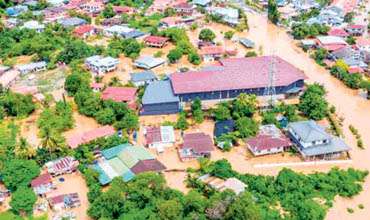

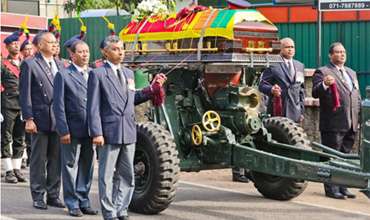


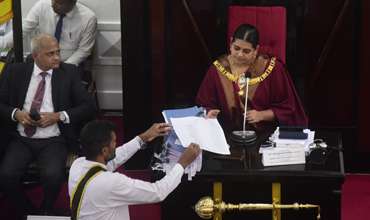
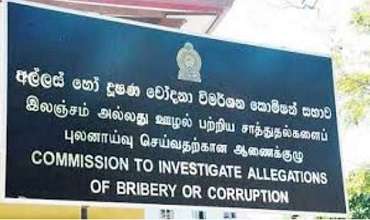
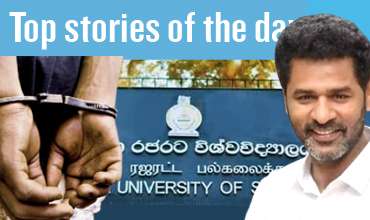

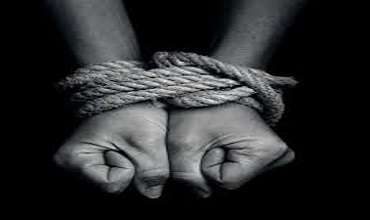
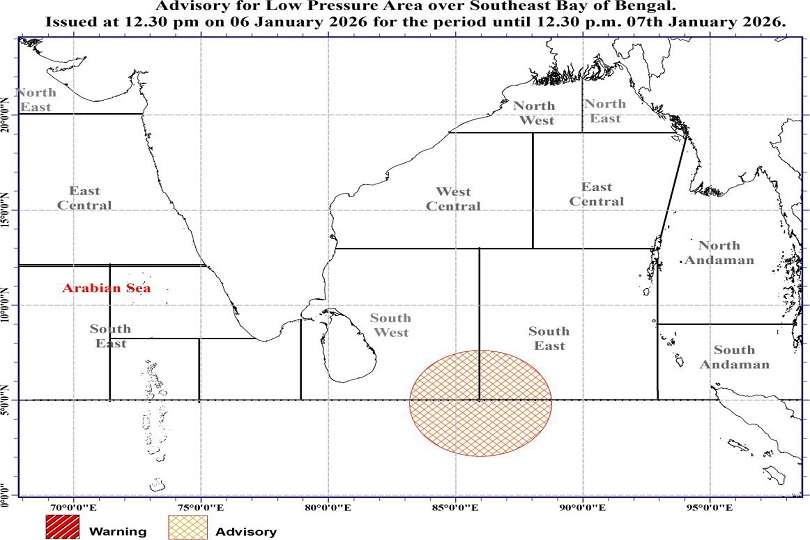
Leave Comments